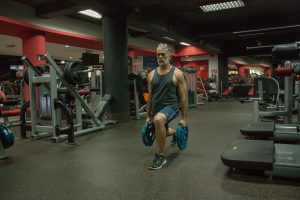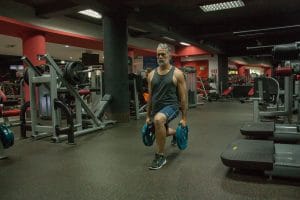 Obesity is one of the most significant health concerns of older adults, but weight loss can lead to bone and muscle loss. One way to prevent bone and muscle loss is exercise.
Obesity is one of the most significant health concerns of older adults, but weight loss can lead to bone and muscle loss. One way to prevent bone and muscle loss is exercise.
Could exercise help to prevent these unwanted side effects for older adults wanting to lose weight?
The background
Obesity is often exacerbated by the age-related changes to physical function that lead to frailty. However, weight loss in older adults can be controversial due to the potential negative effects on bone mass and muscle mass. Bone mineral density (BMD) changes are of particular concern.
One potential solution is combining a weight loss intervention with regular exercise to protect against bone and muscle loss. But it’s unknown which form of exercise is best for supporting bone mineral density – aerobic or resistance exercise.
The study
A 26-week randomised controlled trial was performed to explore the effects of aerobic, resistance or combined exercise during a weight loss intervention with obese older adults.
141 participants completed the trial. Participants were aged ≥65 years with a BMI ≥30 and a sedentary lifestyle. They had maintained a stable body weight for the previous 12 months, were on stable medication levels and had mild to moderate frailty.
Exclusion criteria included severe heart disease, impairments that prevented exercise training, diagnosis of dementia and significantly low BMD at the lumbar spine or proximal femur. Those who had used bone-affecting medications in the previous 12 months were also excluded.
Participants were randomised to one of 4 groups – aerobic, resistance, combination and control.
The aerobic group participated in a weight-management program and aerobic exercise training. The resistance group participated in a weight-management program and resistance exercise training. The combination group undertook a combination of aerobic and resistance training alongside a weight-management program.
The control group did not participate in any weight management or exercise intervention. However, they did attend educational sessions about healthy diet choices during their monthly visits.
The weight-management program prescribed to the 3 intervention groups provided an energy deficit of 500-750kcal/day. This included weekly visits to a dietitian to help with dietary adjustments and behaviour therapy. The goal was to induce approximately 10% weight loss by the 6 month mark.
Aerobic exercise sessions included walking on a treadmill, stationary cycling and stair climbing. Participants began at 65% of peak heart rate, which gradually increased to 70% and 85% over time. Aerobic group participants had 60 minute sessions 3 times per week.
Resistance exercise sessions included a mix of upper body and lower body exercises using machines and balance exercises. Resistance group participants had 60 minute sessions 3 times per week.
For those undertaking the combination intervention, the above exercises took place in combined sessions 3 times weekly that were 75-90 minutes long.
All participants were given supplements to ensure they met an intake of 1500mg/day of calcium and 1000IU of vitamin D/day.
Researchers measured changes in BMD in several locations and bone markers.
The findings
The three intervention groups saw a significant decrease in body weight and fat mass compared to control. BMD and lean body mass had decreased less in the resistance and combination groups than the aerobic group.
Bone turnover markers serum C-telopeptide, procollagen type 1 N-propeptide, and osteocalcin increased more in the aerobic group than the resistance and combination groups.
Conclusions
The researchers concluded that resistance and combined training were associated with less weight loss–induced BMD, lean body mass loss and bone turnover compared to aerobic exercise. Both resistance and combined exercise can be recommended to protect against bone loss to older obese adults undergoing a weight loss intervention.
There were some limitations noted. There was no assessment of bone quality, so it is possible that the interventions could have preserved or improved bone quality independent of BMD.
It was also a shorter duration study, which means the researchers were unable to assess the effect on falls and fractures.
Larger studies could further explore the effect of exercise on bone and muscle loss, including bone quality, fracture risk and differences between the sexes.
Reference
Armamento‐Villareal, R., Aguirre, L., Waters, D.L., Napoli, N., Qualls, C. and Villareal, D.T., 2019. Effect of Aerobic or Resistance Exercise, or Both, on Bone Mineral Density and Bone Metabolism in Obese Older Adults While Dieting: A Randomized Controlled Trial. Journal of Bone and Mineral Research.

